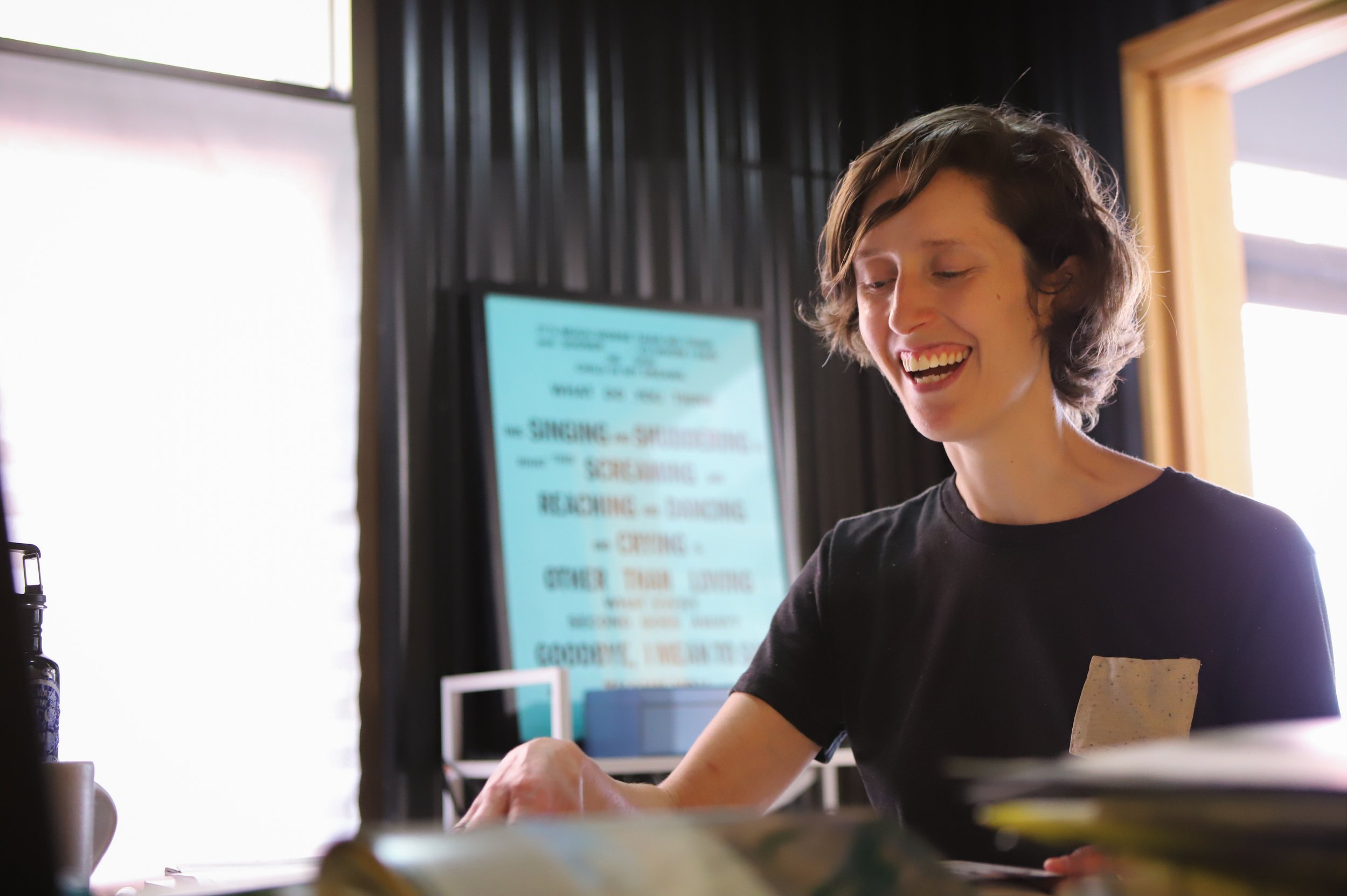Artists Interviewing Artists: MaKshya Tolbert Interviews Sarah Lawson
Published on June 28, 2023.
In this interview, Fall 2022 New City Artist-in-Residence, Sarah Lawson (she/they), interviews Spring 2023 New City Artist-in-Residence, MaKshya Tolbert (she/they).
During their residency, Sarah combined the creative practices of collage and zine-making along with interviews and workshops to explore how the climate crisis is impacting individual and collective ideas of death and dying.
I love this Lucille Clifton quote, from a conversation Clifton has with poet Sonia Sanchez about poems she wrote in the days following 9-11: “These poems wanted to get written and I was available.” How do you make yourself available for your art practice? What does “available” mean to you?
This is huge, right? Being available—logistically, emotionally, and otherwise—is the most difficult part of art-making for me, hands down. It means having materials and space, certainly, but it also means setting aside time and being aware of and open to my perceptions and experiences, freeing myself from distractions meant to fill time and numb reality. Some days, this just feels overwhelmingly impossible, after coming home from a stressful day at work or spending hours on research for my grad program, but by committing to a daily practice that is focused on availability instead of perfection, I am able to work through that—at least somewhat often. I try to remind myself that sitting down with my materials for even ten minutes can feel like opening a portal to a different reality. It activates my brain and my heart in very unique ways and can often counterbalance whatever else the day has held. Still, there are plenty of days when I am just exhausted and choose to curl up with a good book, so I think the idea of availability also includes acknowledging when I’m trying too hard to force something and giving myself grace and pause.
I’m curious about the seams in your collages: how do you think about the joinery of your work, how do you think about smoothness and/or roughness when you’re putting pieces together, and how do those textural decisions inform your artwork, more broadly?
The work I was making in the months leading up to and during my residency reflects a decision to focus on cultivating a regular practice, making myself as available as possible for the work. Hand in hand with that, I wanted to let go of my tendencies toward perfectionism, to embrace ephemerality and relinquish my own preconceived expectations. For me, precision and smoothness require a self-consciousness that I wanted to free myself from in order to fully explore more complex (or chaotic) ideas of climate collapse and grief—experiences that are tempting to look away from, to dissociate from. As a result, a lot of my seams are a bit rough, a bit loose. I also hand-cut everything, which means that lines are a bit wobbly sometimes if the paper is especially thin. The textural aspect of collage is also really interesting to me, so I’m never overly-concerned with sealing every edge tightly; sometimes a little curl or ripple is exactly right.
In terms of revision and transition with pieces that don’t excite you once you’ve made them, or that you’re stuck on—where do you see opportunities for your work to change, to revisit what you were curious about? When you make changes in your work, how do you do so? Do you do so?
In my current work, I’m trying to embrace a more iterative process where revision and transition both play a role. While the immediacy of daily collage-making allowed me to be more open and honest in my work, I am increasingly interested in revisiting those collages and continuing to build on them, experimenting with the addition of line work and other mediums to exiting pieces as well as combining small pieces with new work in order to create larger format pieces. All of this allows me to more deeply explore the themes of the earlier work through an editorial process of sorts, and through an extended reflection on the visual experience. I’m also experimenting with using my collages as writing prompts for short fiction, sometimes putting into words the ethereal stories that surface as I’m making some of the more surrealist collages and other times using more abstract collages as a prompt to play with experimental storytelling.
Can you share a bit about the relationship between our bioregion and the ecological anxiety and grief so core to your work? Where is your attention? How do you collage amid ecological precarity: what keeps you in your body?
Throughout my life, I’ve lived around rivers and creeks, mostly in southwest and central Virginia. I’ve waded and gone swimming in them, watched them flood after hard rains and dry up in the summer, and cared deeply about the crayfish, turtles, frogs, fish, and other flora and fauna that share their waters and their shores. One creek in particular connects my childhood and present, running alongside my grandparents’ house when I was a child as well as the house where I now live.
I’ve watched this creek evolve over the years, walking daily on its banks for the past five years or so. At times it has struggled, at times it has flourished. It is a complex ecosystem that holds an equally complex emotional connection for me and through which I am constantly reminded of the visibility and felt impacts of the climate crisis that we continue creating day by day.
Now, there are often plastic bottles, beer cans, and other trash in the creek that must be pulled out and carried up the hill to toss into the trash or recycling. I have also learned to recognize when the water quality is too questionable to wade in after rains have washed neighbors’ fertilizers and other chemicals downstream. And so I grieve for the creek I once knew, worry about the creatures who depend on it for survival, and struggle not to feel overwhelmed by the knowledge of what we are doing to nature as humans, as part of nature.
As for staying in my body and attending to the precarity with my presence and care, it’s all that I can do. Collaging helps me stay present, avoid dissociating from the horrors and the loss. But mostly, being a person who spends a good amount of time in nature simply necessitates honoring and caring for the parts that I am able to, while also bearing witness to the wonders of our world and helping others do the same, while we still can.
Post-residency: what questions linger from your time? Is there anything you were curious about this Fall that continues sitting at the front of your mind?
I’m still really interested in trying to more fully use collage-making as a community-building and therapeutic tool. As a social work student, I remain excited by the research supporting arts-based interventions for a variety of issues and look forward to exploring the overlap between these interests. I am also still quite interested in exploring how collage might be incorporated into hospice services for people who are dying or coming to terms with death, generally. Finally, I’m also continuing to explore what it means to be part of the Charlottesville arts community despite living at a slight remove these days. It’s an odd balance, with one foot in and one foot out, but I feel very grateful for the opportunities to be able to continue to work in both spheres.
Sarah Lawson (she/they) is a writer and visual artist living in Nelson County, Virginia, whose work explores the natural alongside the artificial, the profound as well as the mundane. Through acts of extraction and reassembly, they imagine new ways of constructing reality and living in this world. In their creative explorations as well as their studies in the VCU School of Social Work, Sarah seeks to build engagement and community co-creation into their practice in order to foster connection and a collective capacity for awe.
The New City Arts Fall 2022 Residency was made possible with support from The Genan Foundation. This exhibition was made possible with support from the Bama Works Fund of the Dave Matthews Band at the Charlottesville Area Community Foundation.



